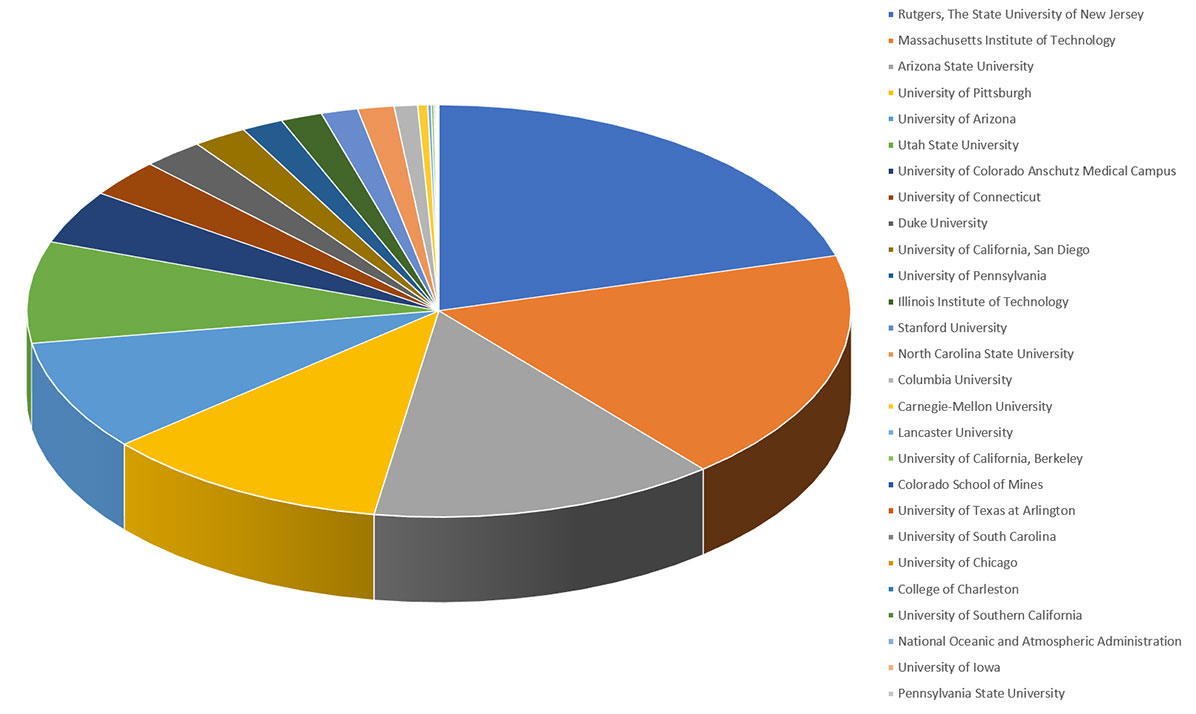News
PATh Extends Access to Diverse Set of High Throughout Computing Research Programs
Published November 02, 2022
Cynthia Dillon, SDSC External Relations
Finding the right road to research results is easier when there is a clear PATh to follow. The Partnership to Advance Throughput Computing (PATh)—a partnership between the OSG Consortium and the University of Wisconsin-Madison’s Center for High Throughput Computing (CHTC) supported by the National Science Foundation (NSF)—has cleared the way for science and engineering researchers for years with its commitment to advancing distributed high throughput computing (dHTC) technologies and methods.
HTC involves running a large number of independent computational tasks over long periods of time—from hours and days to week or months. dHTC tools leverage automation and build on distributed computing principles to save researchers with large ensembles incredible amounts of time by harnessing the computing capacity of thousands of computers in a network—a feat that with conventional computing could take years to complete.
Recently PATh launched the PATh Facility, a dHTC service meant to handle HTC workloads in support and advancement of NSF-funded open science. It was announced earlier this year via a Dear Colleague Letter issued by the NSF, identifying a diverse set of eligible research programs that range across 14 domain science areas including geoinformatics, computational methods in chemistry, cyberinfrastructure, bioinformatics, astronomy, arctic research and more. Through this 2022-2023 fiscal year pilot project, the NSF awards credits for access to the PATh Facility, and researchers can request computing credits associated with their NSF awards. There are two ways to request credit: 1) within new proposals or 2) with existing awards via an email request for additional credits to participating program officers.
“It is a remarkable program because it spans almost the entirety of the NSF’s directorates and offices,” said San Diego Supercomputer Center (SDSC) Director Frank Würthwein, who also serves as executive director of the OSG Consortium.

A diverse set of PATh national and international users benefit from the resource, and the recent launch of the PATh Facility further supports HTC workloads in an effort to advance NSF-funded open science. The colors on the chart correspond to the total number of core hours – nearly 884,000 – utilized by researchers at participating universities on PATh Facility hardware located at UC San Diego. [Click to enlarge] Credit: Ben Tolo, SDSC
Access to the PATh Facility offers researchers approximately 35,000 modern cores and up to 44 A100 GPUs. Recently SDSC, located at UC San Diego, added PATh Facility hardware on its Expanse supercomputer for use by researchers with PATh credits. According to SDSC Deputy Director Shawn Strande: “Within the first two weeks of operations, we saw researchers from 10 different institutions, including one minority serving institution, across nearly every field of science. The beauty of the PATh model of system integration is that researchers have access as soon as the resource is available via OSG. PATh democratizes access by lowering barriers to doing research on advanced computing resources.”
While the PATh credit ecosystem is still growing, any PATh Facility capacity not used for credit will be available to the Open Science Pool (OSPool) to benefit all open science under a Fair-Share allocation policy. “For researchers familiar with the OSPool, running HTC workloads on the PATh Facility should feel like second-nature” said Christina Koch, PATh’s research computing facilitator.
“Like the OSPool, the PATh Facility is nationally spanning, geographically distributed and ideal for HTC workloads. But while resources on the OSPool belong to a diverse range of campuses and organizations that have generously donated their resources to open science, the allocation of capacity in the PATh Facility is managed by the PATh project itself,” said Koch.
PATh will eventually reach over six national sites: SDSC at UC San Diego, CHTC at the University of Wisconsin-Madison, the Holland Computing Center at the University of Nebraska-Lincoln, Syracuse University’s Research Computing group, the Texas Advanced Computing Center at the University of Texas at Austin and Florida International University’s AMPATH network in Miami.
PIs may contact credit-accounts@path-cc.io with questions about PATh resources, using HTC, or estimating credit needs. More details also are available on the PATh credit accounts web page.

